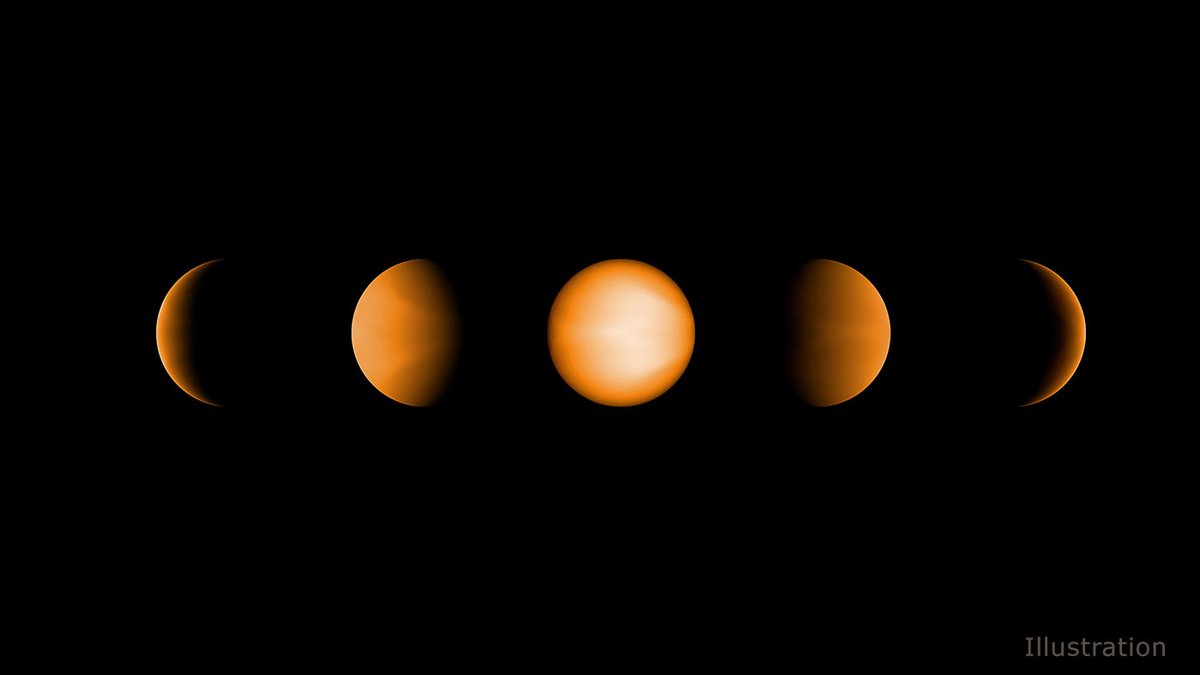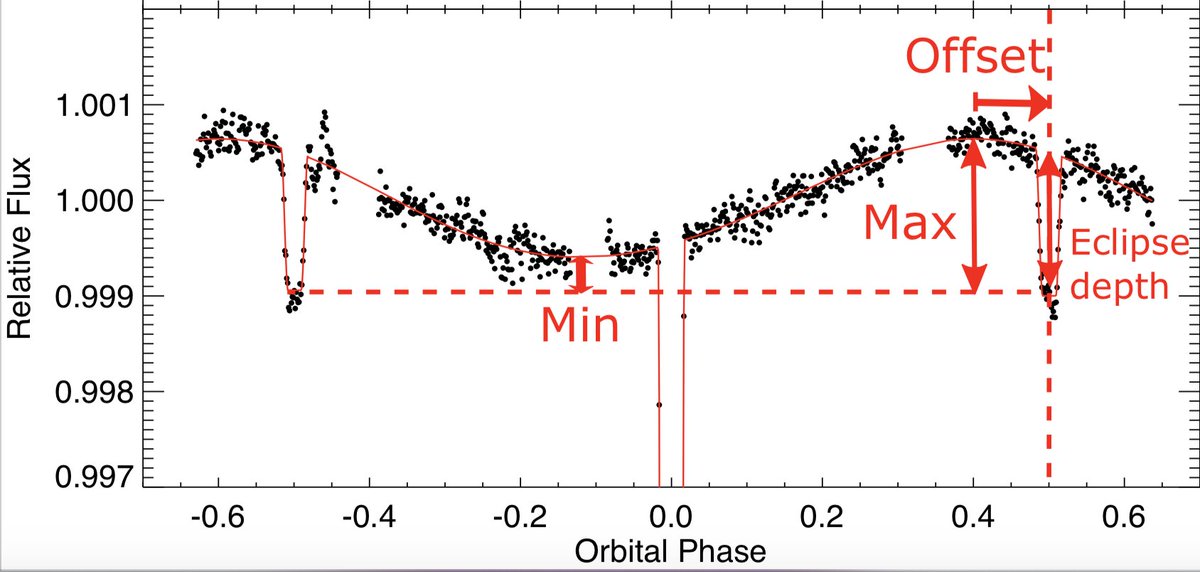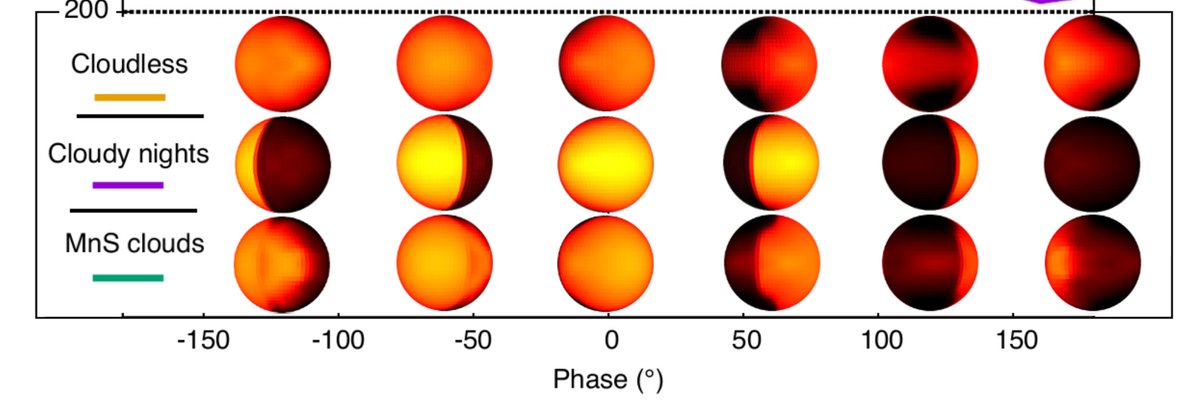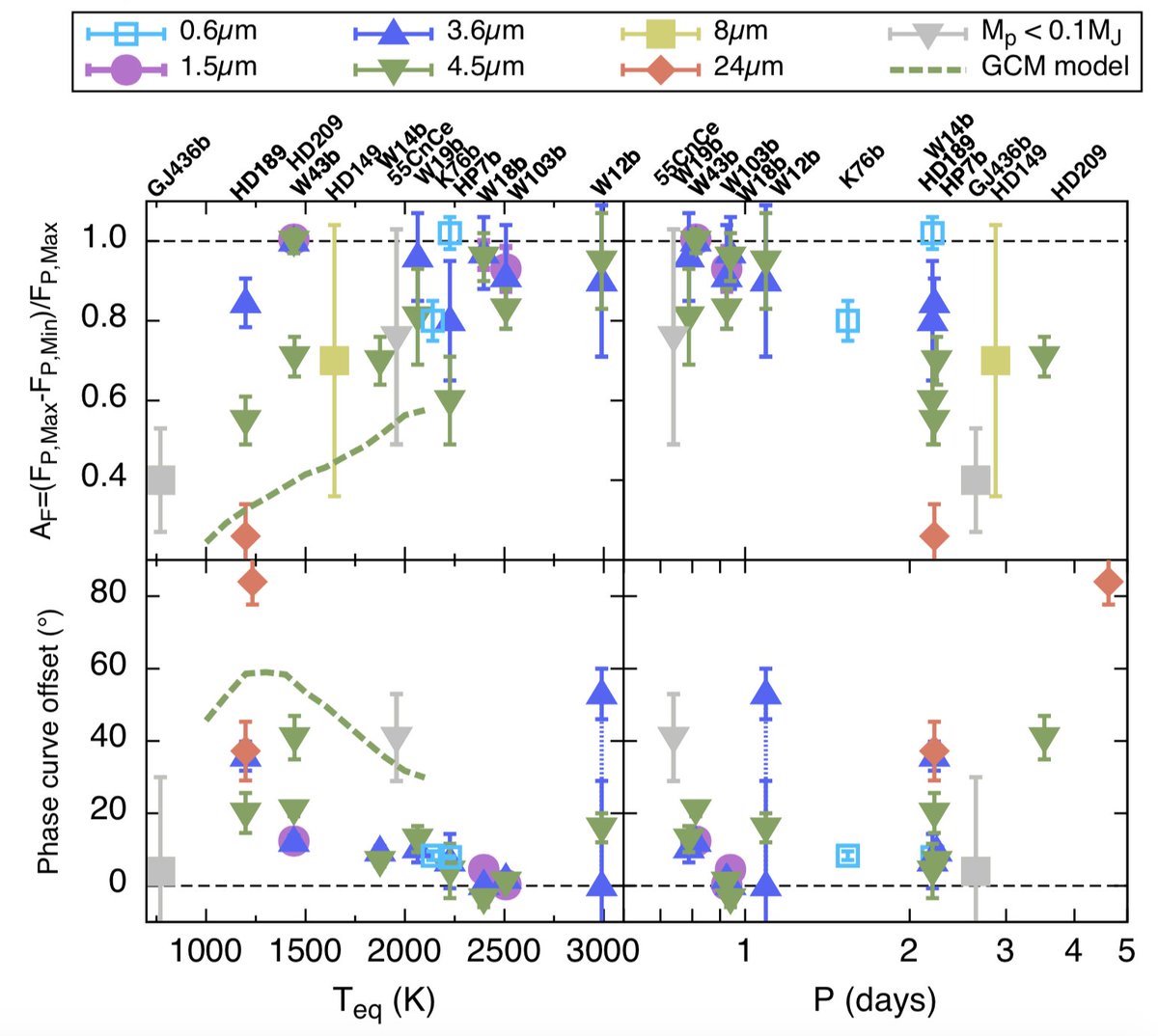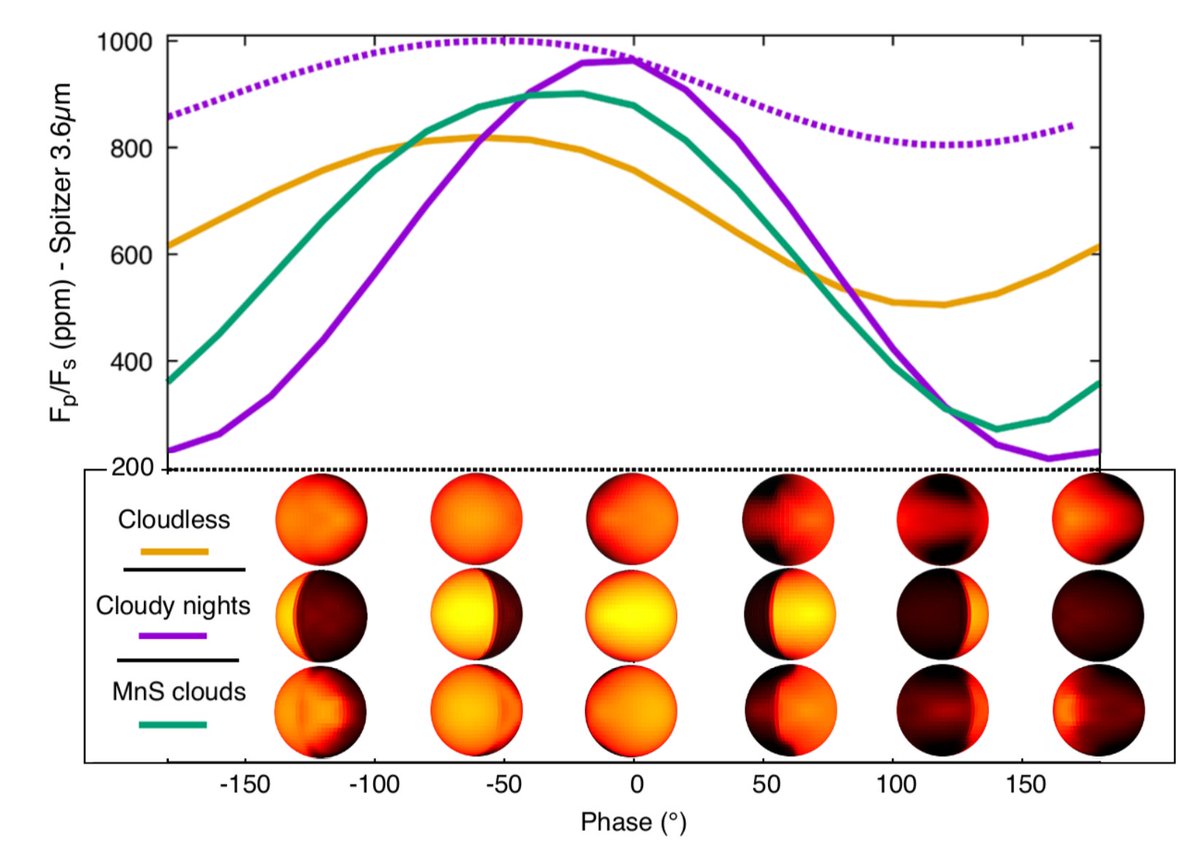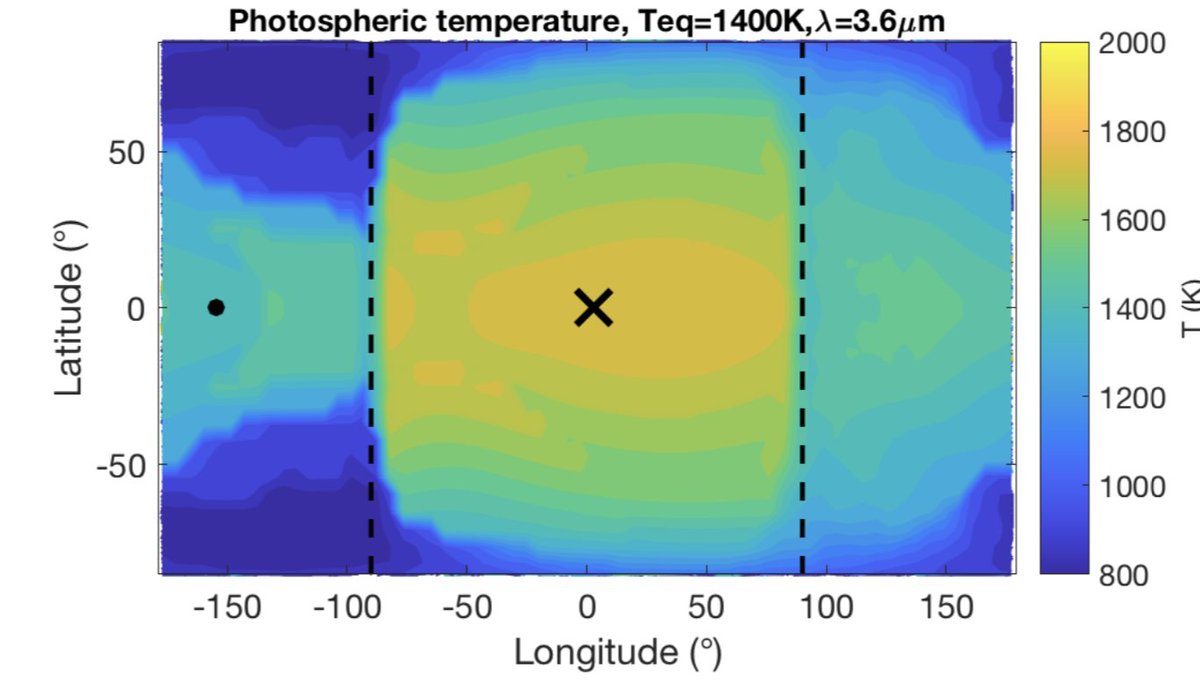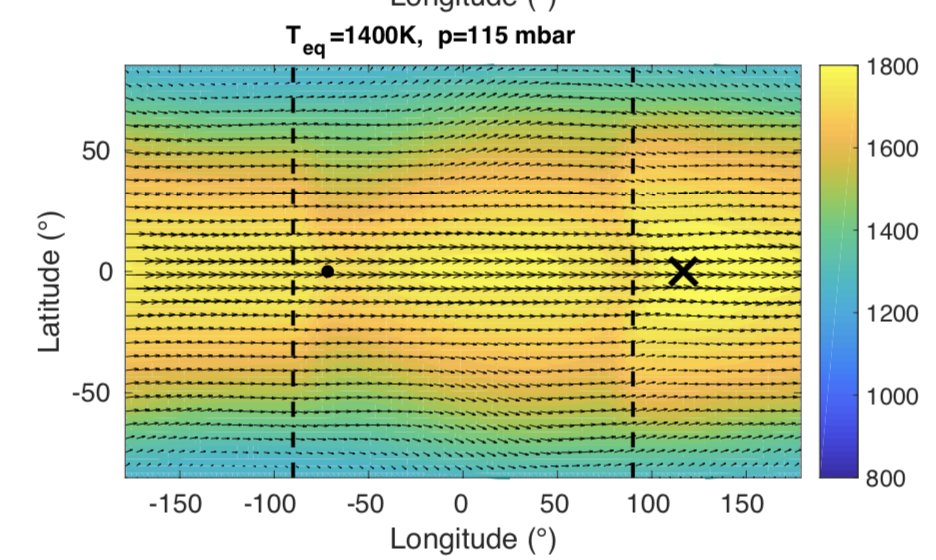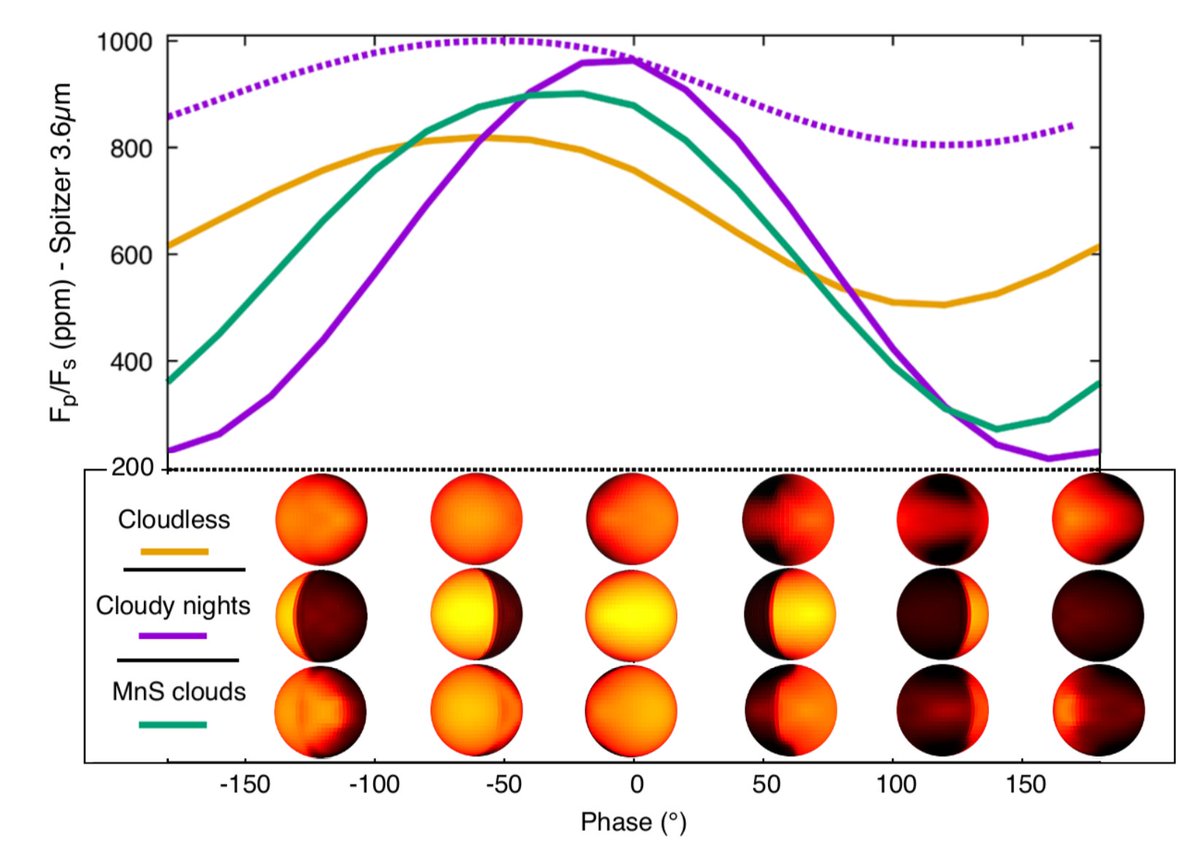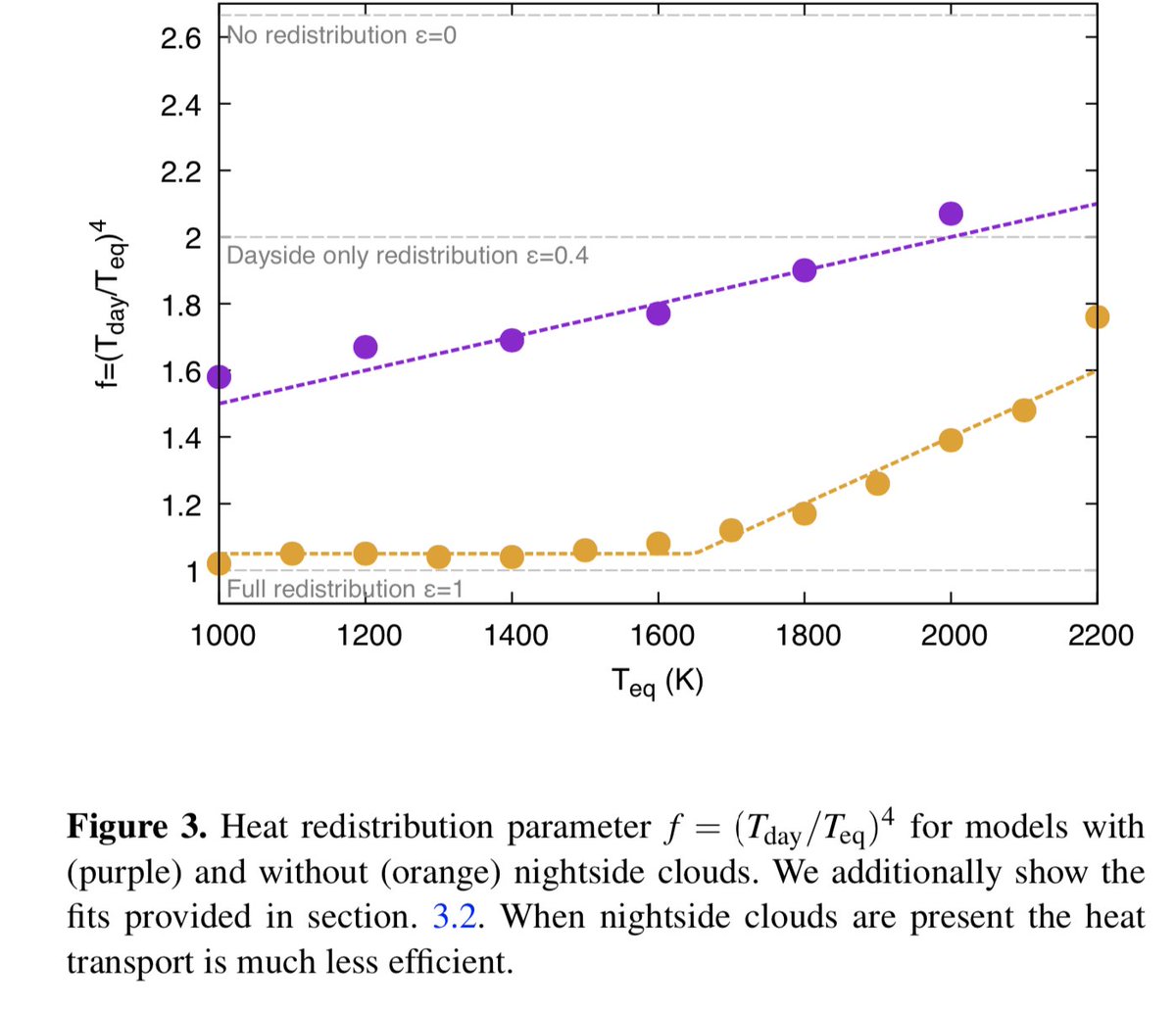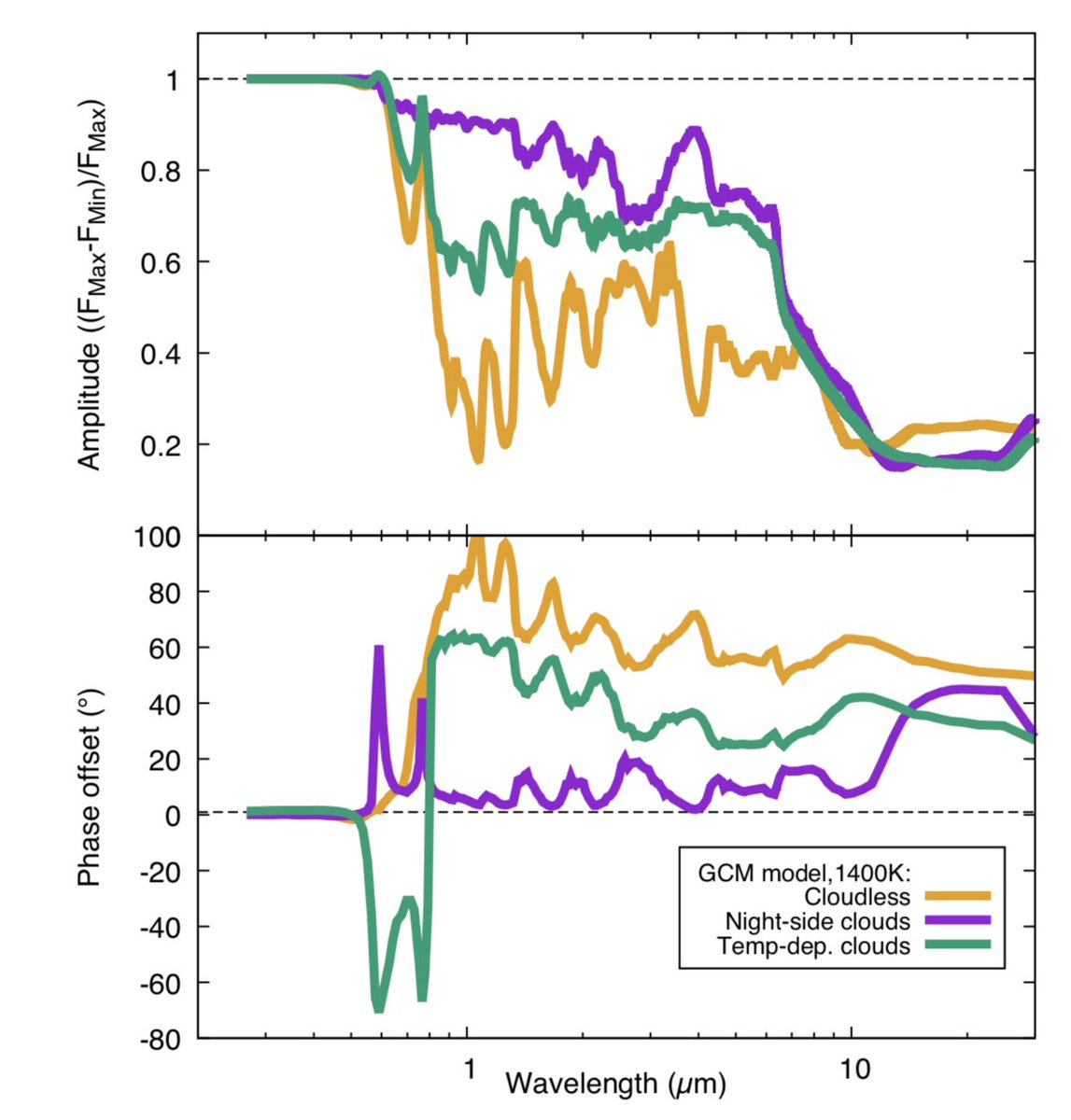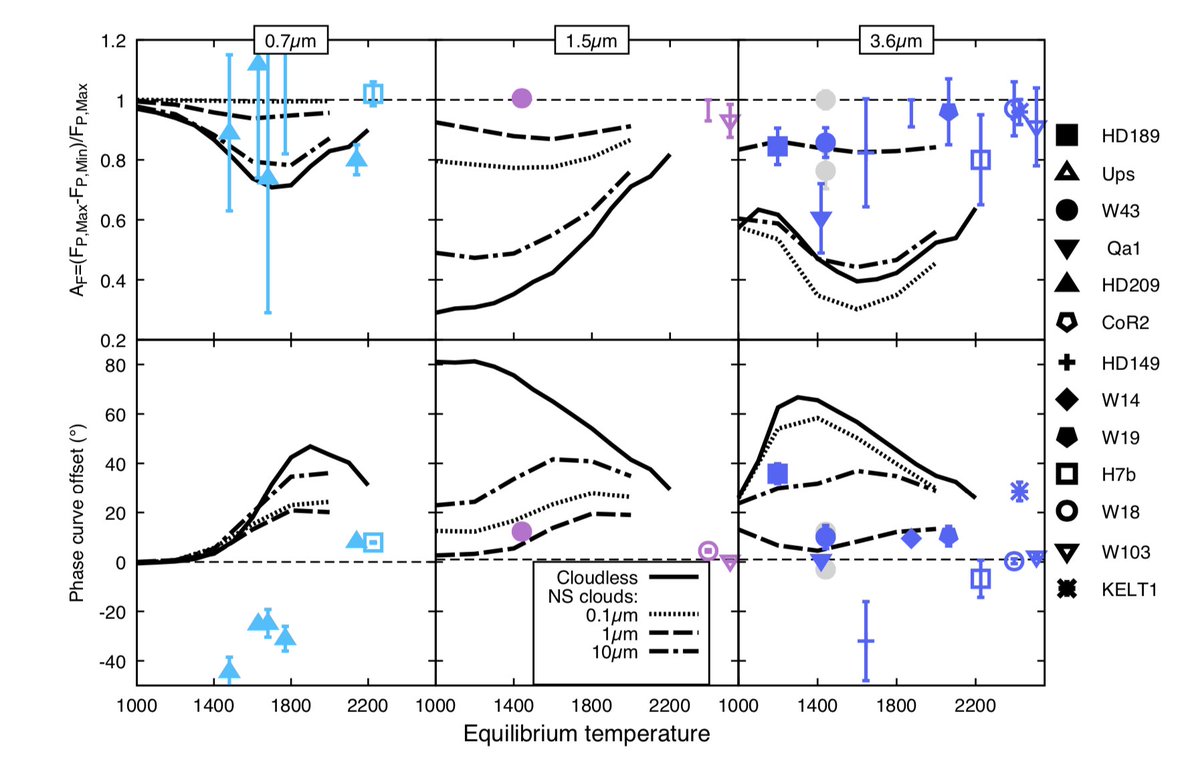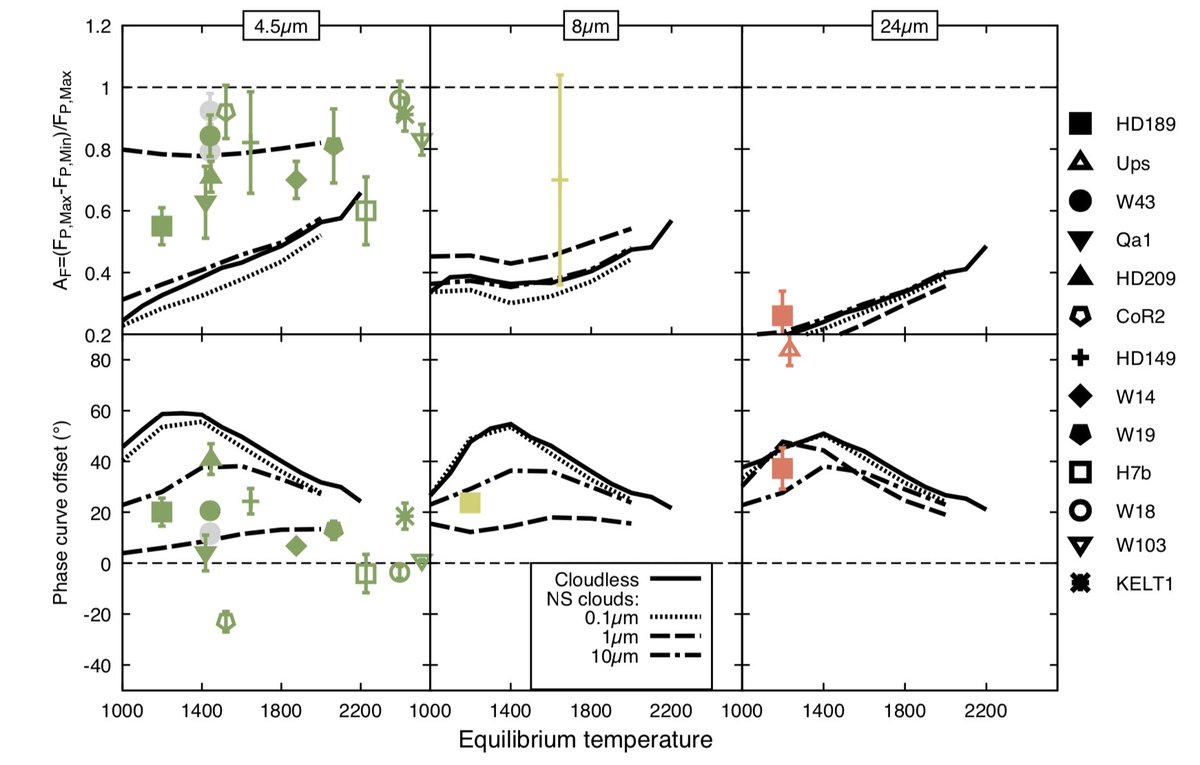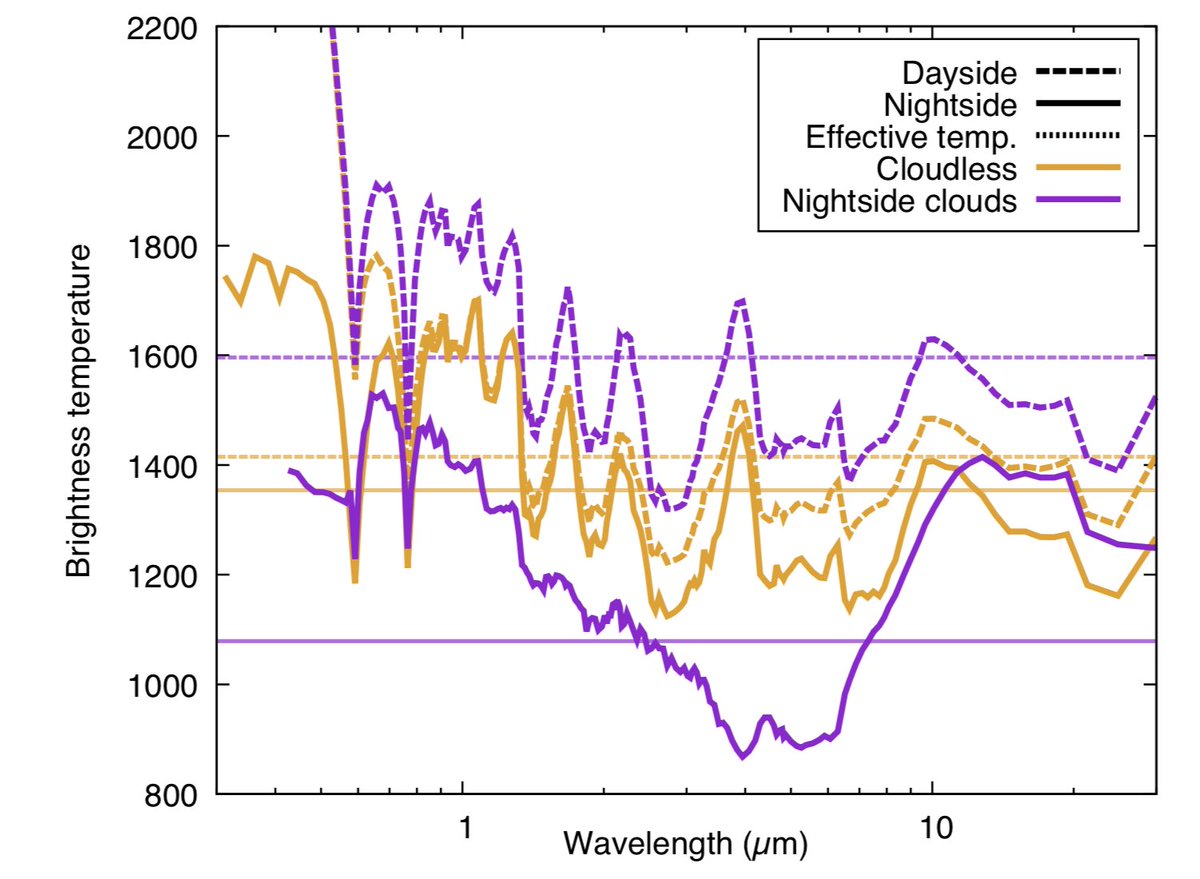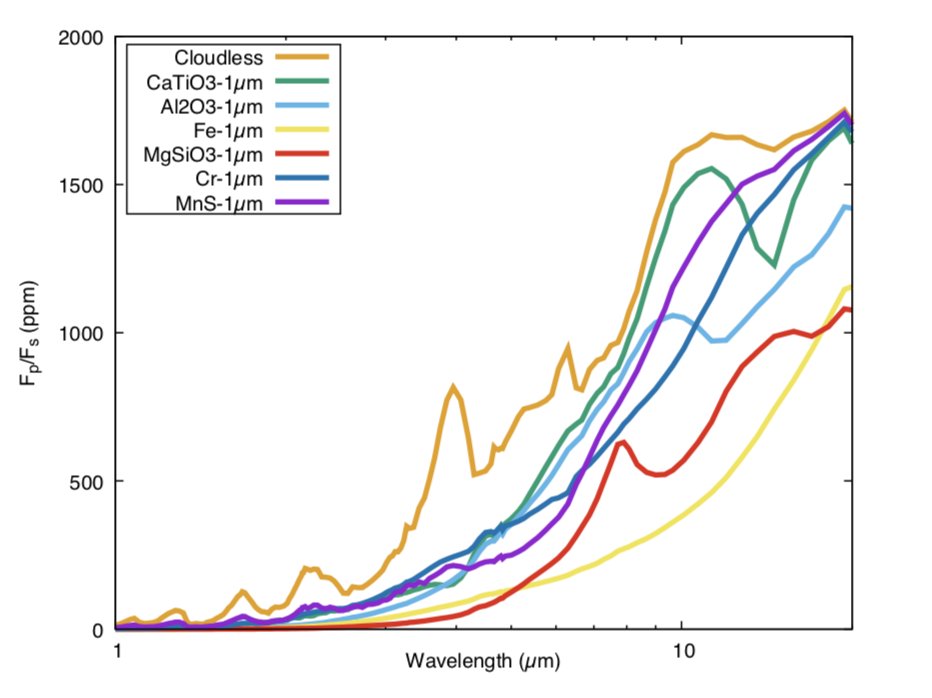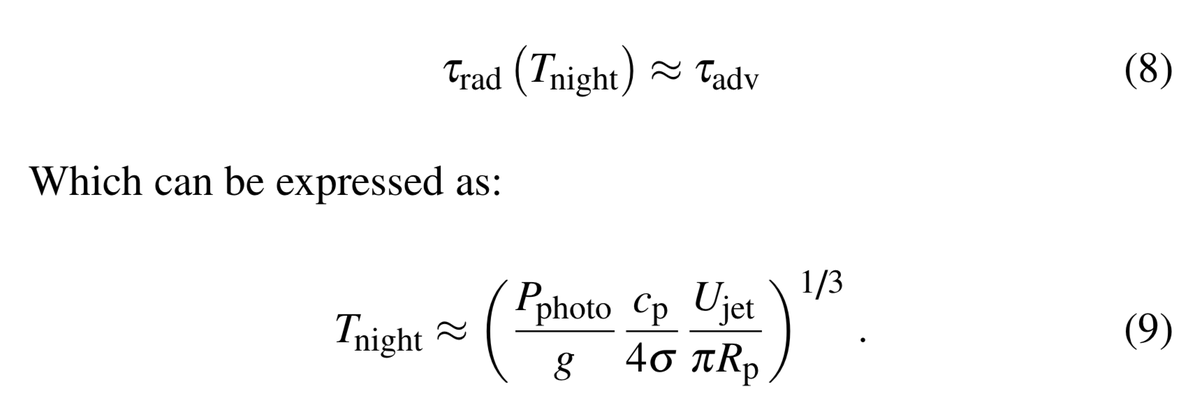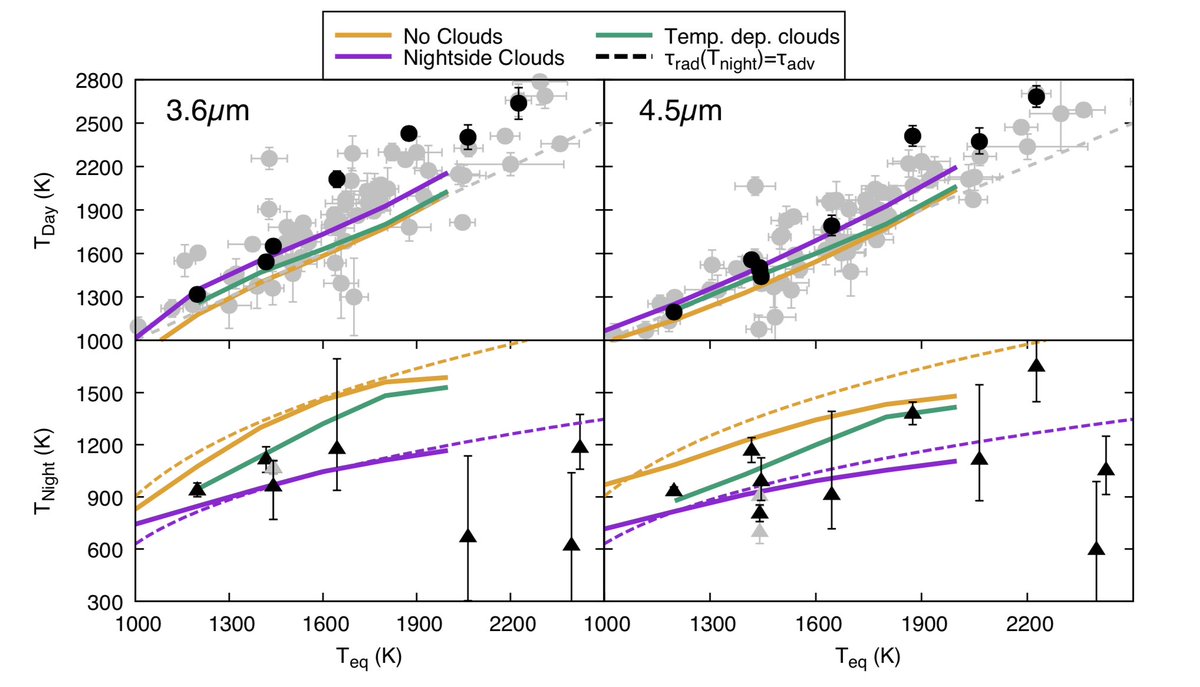Hot Jupiter have been puzzling us for a while ! Their nightside looks cooler than we expect and the thermal structure seems much more symmetrical than expected. Today with @jjfplanet we discuss why nightside clouds are a good solution to this puzzle ! https://arxiv.org/abs/2010.06934 ">https://arxiv.org/abs/2010....
We know that thanks to phase curves, which monitor the light of the planet as a function of time. We use the phase curve amplitude and the phase curve offset as probe of day/night flux contrast and asymmetry in the flux distribution.
To understand what we can learn from these phase curve we run general circulation models. Basically solving some flavour of the hydro and radiative equation on a sphere. These give temperature maps and observables. Below I show how a modelled planet looks as it turns on itself.
Up to now most models (green line below) were producing larger than observed amplitude (points, top panel) and smaller than expected offsets (points, bottom panel), that was a puzzle !
But most of these models didn& #39;t include clouds, and we know from several clues that the *nightside* of these planets, where it is cold, should be cloudy with exotic clouds such as silicate, corundum etc. https://www.jpl.nasa.gov/news/news.php?feature=6649">https://www.jpl.nasa.gov/news/news...
So we went on and added these nightside clouds to the GCM, see what happens. And we were not disappointed ! First, nightside clouds *warm up* the nightside through the greenhouse effect and *increase* the hot spot shit.(without clouds on the left and with cloud on the right) !
So that seems to go the wrong way ! However, when computing phase curves we saw that the amplitude is increased and the phase curve shift decreased by the presence of nightside clouds (ignore the dashed line) !
That& #39;s because nightside clouds change the photospheric pressures (the heigh of the layer we see) on the nightside but not on the dayside ! So the map we see looks like the one on the left, rather than the isobaric map (see on the right).
Because the phase curve offset tracks the center of the brightest visible hemisphere, it is *very* sensitive brightness gradients. e.g. the dashed line is a phase curve for the *same* temperature map as the plain line, but we removed the cloud opacity when calculating the spectra
So large phase curve amplitude *and* small phase curve offset can be due to the *same* phenomenon: the presence of nightside clouds. Also that& #39;s annoying because it means that phase curve offset is not *directly* tied to the hottest point of the planet !
What goes in the same direction is that *overall* clouds *reduce* the heat transport from day-to-night. That& #39;s because even if the nightside is warmer, the higher opacities impede the heat to come out and the heat is just brought back to the dayside !
The nice thing about our model is that it& #39;s non-grey, meaning that we can look at the spectral variation of the amplitude and phase curve offset. And ... it& #39;s important ! Both for the energy balance of the atmosphere and also to interpret observations !
And we do compare with observations, bandpass by bandpass. You can see that nightside clouds bring us much closer to the observations, yeah ! But also that small variations in cloud parameter (e.g. particle size) can make huge variation in phase curve offset.
So that& #39;s bad news for some: you can& #39;t really interpret phase curve observations with simple models (e.g. shallow water, energy balance, semi-grey etc). 2D retrievals ( @PatrickIrwin1) can help get a temperature map from the obs. that can be used to compared with simple models.
That also applies for temperatures ! Brightness temperatures vary *a lot* with wavelength, particularly when clouds are involved ! Assuming that e.g. Spitzer 4.5 micron gives you a good idea of the "redistribution" is not good.
Finally, as often, JWST will solve most of these problems. 1) by measuring phase curves over a wide range of wavelengths we can have the *real* heat transport estimate. 2) by measuring the spectral signature of nightside clouds, which should help us pin down their composition !
As a side note, to retrieve anything meaningful from hot Jupiter nightside spectrum you& #39;ll need the magic recipe proposed by @AstroJake to deal with the thermal scattering of the clouds ( https://arxiv.org/abs/2009.12411 )">https://arxiv.org/abs/2009.... !
Finally we also looked at what set the nightside temperature on these planets. The answer is in the T**3 dependency of tau_rad. The hotter you are the faster your cool ! The nightside temperature is the one for which you don& #39;t have time to cool more while crossing the nightside.
And the scaling works well to explain why the nightside temperature doesn& #39;t increase much with Teq ! Nightside clouds *are* still necessary to move the photosphere to lower pressure and reduce P_photo, but the low increase of Tnight vs. Teq is *not* due to clouds.
We also compare with the semi-grey models of Komacek, Perna and Roman (today on ArXiV too !). Even though semi-grey model cannot provide reliable estimate of phase curves on a given observational bandpass, they do get an accurate estimate of the bulk day/night heat transport.
We decided to co-post our results with the great team made by Mike Roman, @astronemly et al. ( https://arxiv.org/abs/2010.06936 ).">https://arxiv.org/abs/2010.... They use a different (semi-grey) approach to look at the same problem ! So check their paper too !
I& #39;ll stop here, but don& #39;t hesitate to DM me ! I& #39;m happy to join paper coffee discussions by zoom for however wants to hear more in an informal way !
The paper is here : https://arxiv.org/abs/2010.06934 .">https://arxiv.org/abs/2010....
The paper is here : https://arxiv.org/abs/2010.06934 .">https://arxiv.org/abs/2010....

 Read on Twitter
Read on Twitter